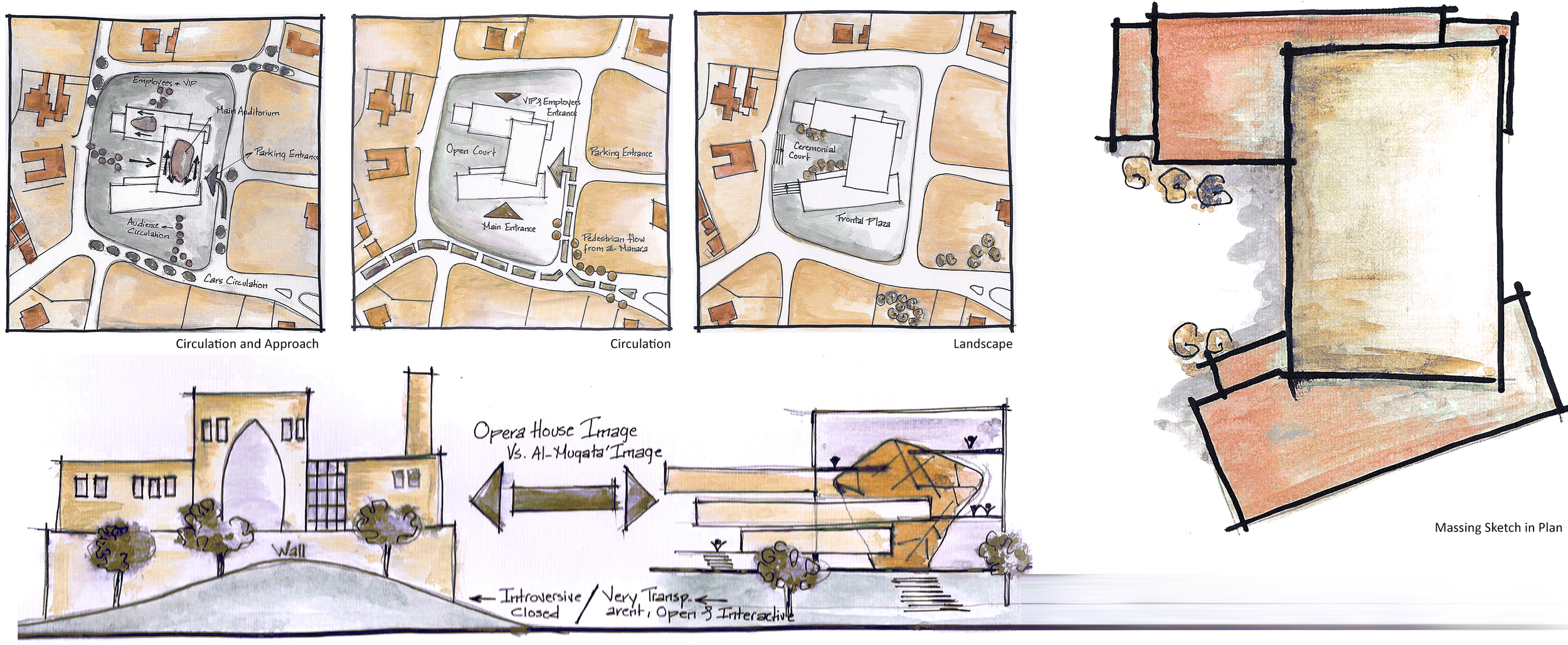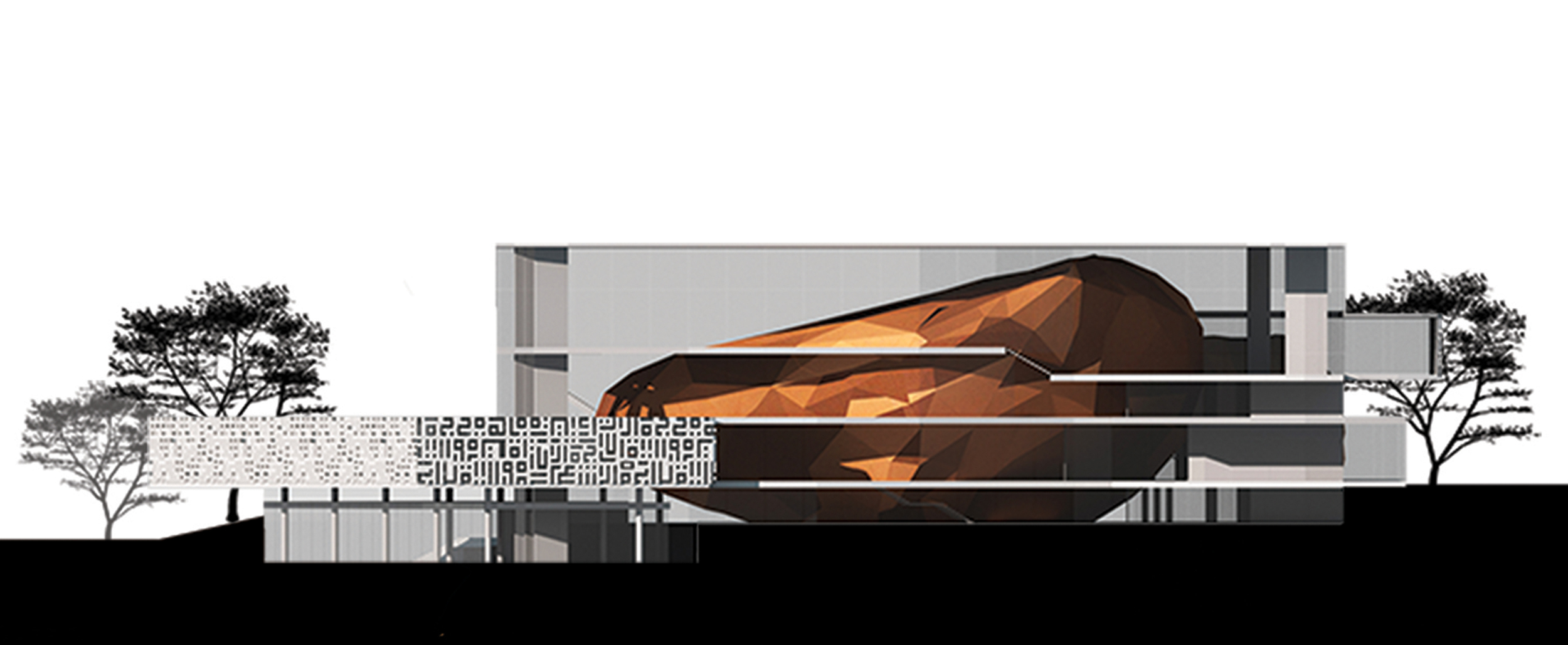








The Opera House
Student at: Birzeit University
Course: Design5
Description: Designing the National Palestinian Opera House
Working Date: 2010
Team: Hania Halabi, Sara Khasib
The concept of the Opera House emerges from the Palestinian Traditional Architecture treated with a modern Approach, it takes cues from the Regional Architecture & builds on the best practices in contemporary architecture. The Architectural Values, Quality of space and experience are influenced by the Palestinian Traditional Architecture with a different implementation thatpreserves traditional crafts& promotes new technologies. The Interactivity between the Audience before and after the performances is organized according to the principles of the Arabic courtyard, a response that is sensitive to the culture and location of the site. The Monumentality on the other hand is taken from the Image of "Qura al-Karasi".
The Image of the Opera House simulates the Image of Al-Muqata'a in it's Monumentality but opposes it's Closure and Introversion. The building with it's high Transparency comes to be very open and interactive with the public. The building’s form is derived from the U-shape, so as to create an exterior court that will act as a main hub for people to meet before any performance, the court is oriented towards a plaza for a museum that is across the street, in order to achieve integration between them on a cultural level.
As for the Interior, the user experiences the main Auditorium hall as space within the space of the building. The form of the Auditorium hall itself is inspired from the Palestinian nature and is achieved by the use of origami architecture. The facades of the Opera were also designed in an Oriental Palestinian sense by using Arabic Calligraphy in the form of a pattern as a way to represent the culture reflecting the arabic “Mashrabiyah” in a modern way.
